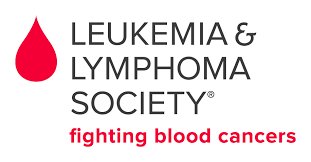To understand blood cancer, it is important to first understand what cancer is: the production of abnormal cells.
The body is programmed to routinely replenish cells in the blood and in organs. Normal cells die off as they age or are damaged, and new cells take their place. Abnormal cell growth refers to a buildup of extra cells that happens when new cells form when they aren’t needed, or when old, damaged cells don’t die off when they should.
Acute lymphoblastic leukemia (ALL)s a cancer of the bone marrow and blood. This type of leukemia progresses rapidly without treatment and doesn’t have a known cause. ALL affects your blood cells and immune system.
If you are diagnosed with ALL, it is important to start treatment as soon as possible. The type of treatment you receive and your outcome depend on what subtype of ALL you have and your individual risk factors.
How ALL Develops
ALL develops when the DNA of a developing stem cell in the bone marrow is damaged. Normal stem cells in the bone marrow form blood cells, which consist of white cells, red cells and platelets. The stem cells form white cells that start out as lymphoblasts, which produce a type of white cell, called a lymphocyte.
The three main types of lymphocytes are B lymphocytes (produce antibodies to help combat infections), T lymphocytes (assist B lymphocytes to make antibodies) and natural killer (NK) cells, which can attack tumor cells.
ALL develops from early-stage lymphocytes in various stages of development. Eighty-five percent of ALL cases involve B lymphocytes and about 15 percent involve T lymphocytes. ALL rarely affects NK cells. Although ALL starts in a stem cell in the bone marrow, it can spread to other areas such as the central nervous system, the lymph nodes and, more rarely, the testes.
This damaged cell then becomes a leukemic cell and multiplies into billions of cells called leukemic lymphoblasts.
Leukemic lymphoblasts do not function normally. They grow and survive better than healthy cells while blocking the production of normal cells. As a result, the number of healthy blood cells becomes lower than normal.
Unhealthy cell growth can result in:
- Anemia – a condition when there is a low number of red cells in the blood which can cause fatigue and shortness of breath.
- Neutropenia – a condition when there is a low number of white cells so that the immune system can't effectively guard against infection due to a lack of neutrophils (a type of white cell).
- Thrombocytopenia – a condition when there is a low number of platelets which can cause bleeding and easy bruising with no apparent cause.
- Pancytopenia – a condition when there are low numbers of all three blood cell counts.
Signs and Symptoms
The signs and symptoms of ALL are also common to other, less serious illnesses. If you feel that you may be affected by ALL, talk to your doctor. Signs and symptoms include:
- Bruises for no clear reason
- Prolonged bleeding from minor cuts
- Aches in the arms, legs or back
- Enlarged lymph nodes
- Fever without an obvious cause or a lasting, low-grade fever
- Headaches
- Pale skin
- Pinhead-size red spots under the skin
- Shortness of breath during normal physical activity
- Tiredness or no energy
- Vomiting
- Unexplained weight loss
To learn more, visit The Leukemia and Lymphoma Society.
 Content provided by:
Content provided by: